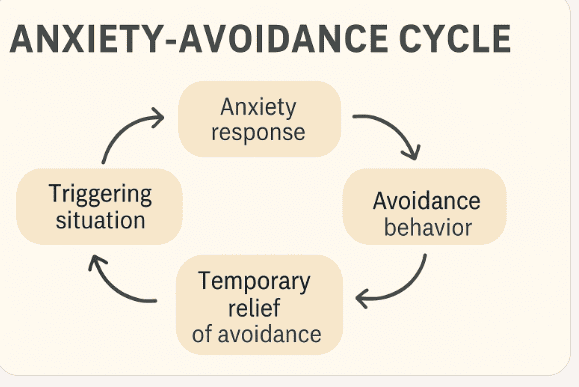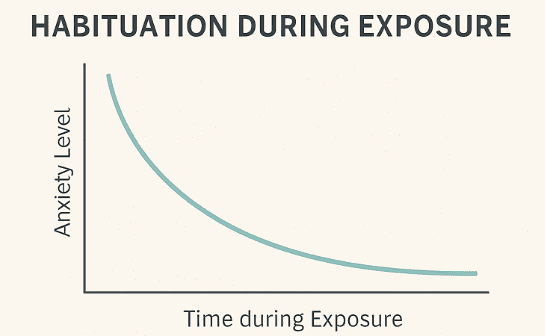Welcome! Feeling anxious is tough, but you've taken a brave step by being here. This tool is designed to gently guide you through "Graded Exposure," a powerful strategy from Cognitive Behavioral Therapy (CBT) that helps you face anxiety and fears step-by-step.
Think of it like climbing a ladder. Instead of trying to jump straight to the top (which can feel overwhelming!), we'll break down challenging situations into smaller, more manageable steps. By facing these steps one by one, you give your mind and body a chance to learn that you can handle uncomfortable feelings and that the scary outcomes you worry about often don't actually happen.
When something scares us, our first instinct is often to avoid it. Makes sense, right? Avoiding brings quick relief, making us feel better in the moment*. But here's the catch: this avoidance accidentally teaches our brain that the situation truly *is* dangerous and that we couldn't handle it. It prevents us from discovering two crucial things:
This pattern – feeling anxious, avoiding, feeling temporary relief, but reinforcing the fear – is called the "Anxiety-Avoidance Cycle." It's like a loop that keeps anxiety going strong. Exposure helps us break that loop.

Graded exposure helps you break the cycle by carefully and strategically facing feared situations, *without* relying on old coping tricks (we call these "Safety Behaviors"). Two key things happen:

Safety behaviors are those little things we do (sometimes without even realizing it!) to try and feel safer or reduce anxiety *during* a feared situation. They seem helpful, but they actually trick our brain. They prevent us from fully learning that we're okay *without* them, essentially short-circuiting the habituation and new learning process.
Think about it: if you always grip the handrail tightly in a high place, you might think, "Phew, I only survived because I held on!" You don't get to learn that you would have been safe even without gripping it.
Common examples include:
A big part of successful exposure is noticing *your* specific safety behaviors and making a plan to gradually let them go as you practice each step of your ladder.
Exposure isn't just about physically going places. There are a few ways you might practice the steps on your ladder, depending on the situation:
Your ladder might include a mix of these, especially 'In Vivo' for most anxiety-provoking situations.
To get us started, what kind of challenge are you hoping to work on? Select a common scenario below, or choose "Build a Custom Ladder" if your situation is different.
Imagine you've successfully worked through this ladder. What specific situation or activity would you like to be able to do more comfortably? Getting really clear on your goal helps keep us focused. Be as specific as you can!
Okay, let's think about the journey towards your goal. What specific situations or smaller steps related to your goal trigger anxiety for you? Try to list things that range from mildly uncomfortable to quite challenging. These will become the rungs of our ladder.
Now, let's look at each situation you've listed. Thinking about facing it *right now*, how much distress (anxiety, fear, discomfort) do you imagine it would cause? Use the slider below (0 = completely calm, 100 = extreme distress).
Also, take a moment to check off the feelings and physical sensations you anticipate experiencing. This helps you become more aware of your body's signals.
(This 0-100 rating is often called SUDs - Subjective Units of Distress. It's just your personal estimate!)
Time to assemble your ladder! Below on the left are the situations you rated, sorted by how distressing you estimated them to be. Drag them from the list and drop them into the ladder area on the right.
Your goal is to arrange them in order, with the least distressing step at the bottom and the most distressing step towards the top.
Fantastic work! You've successfully built your personalized fear ladder. Take a moment to appreciate the effort you've put in. Below is your roadmap for gradually facing the situations you identified.
[Goal will be displayed here]